|
Part Five
Internal Wiring & Box Damping
From 2021 onward, Crossover PCBs are now available and
the Crossover can be mounted in the base. This page reflects that approach.
But the constructor still has the option to mount it externally.
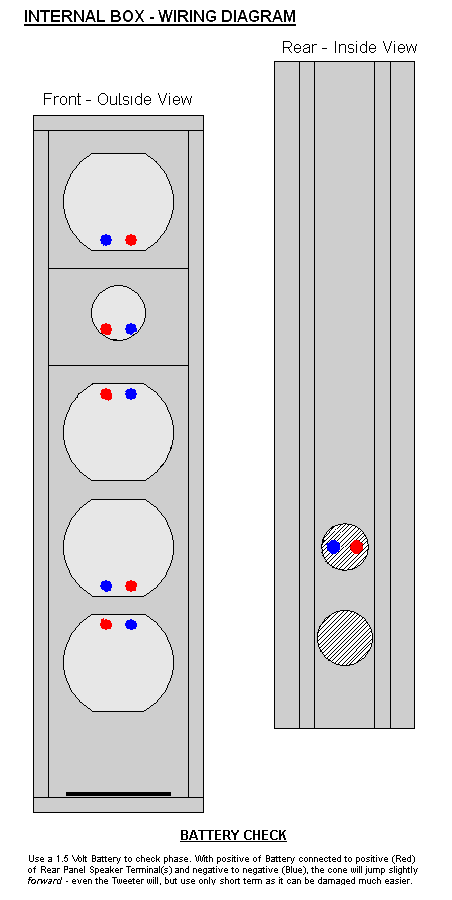
Mount drivers in such a way that they look like above.
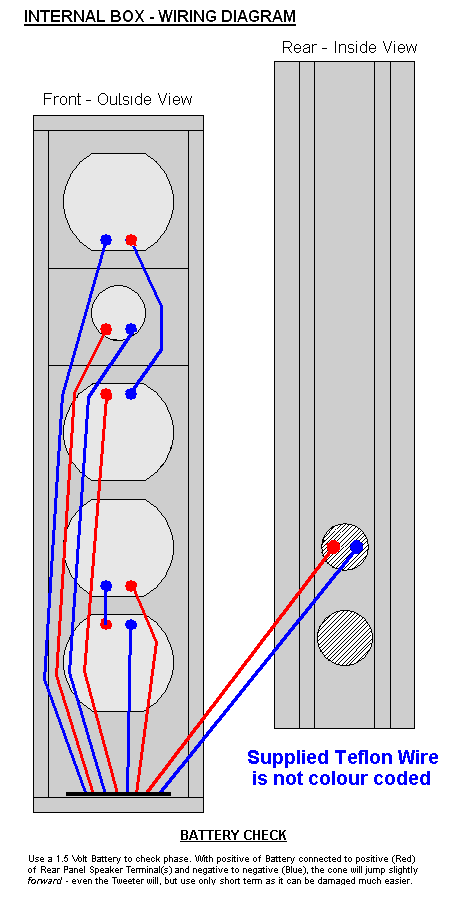
I have supplied a few Kits and supplied the Teflon Wire -
but you may chose your own.
Mounting and Wiring to the Crossover mounted in the bottom
of Box as seen above.
Access to the Crossover in just below the bottom driver
and goes through that hole.
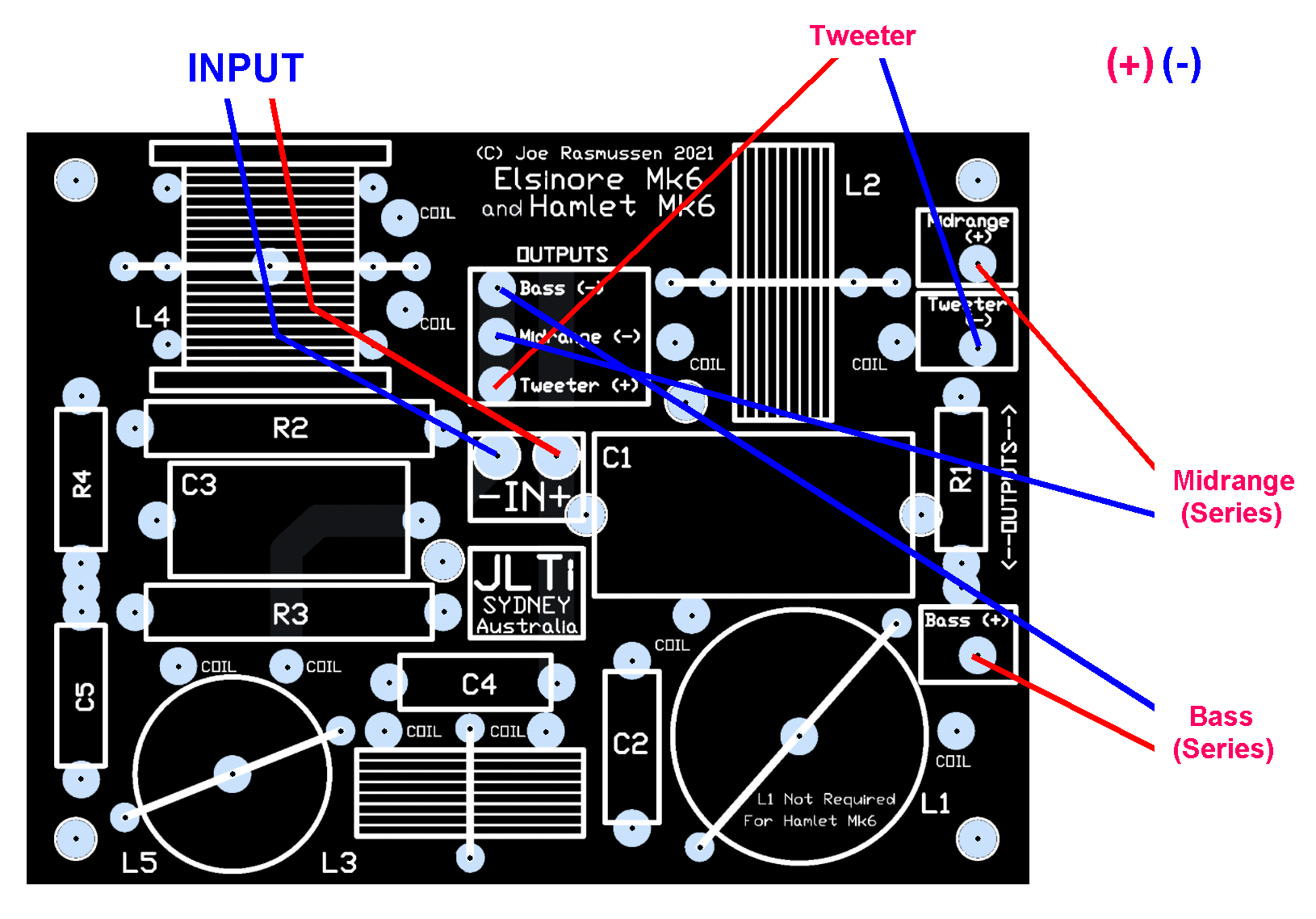
INCORRECT WIRING OR WRONG PHASE WILL
SERIOUSLY DEGRADE PERFORMANCE
Above three drawings show the suggested way.
Red is Positive and
Blue is Negative.
Must use battery to make sure
you have gotten the polarity right!
See Battery Check above
WIRE SELECTION:
This is a loaded question as there are so many
opinions out there. It may surprise that I use only 22 AWG Teflon (PTFE)
Wire as it may be smallish gauge. Keep in mind that drivers are wired in
series @ nominally 16 Ohm, where as many modern speakers are 4 Ohm and then
does indeed need higher gauge. The part I use is available in 100 Metre roll
from Farnell/Elemet14 and the part number is 1184037. But they also sell
other gauges, but very expensive in 100 Metre roll. The wire I use is 19
Strands of Silver Clad Copper in a hard twist and Teflon jacketed.

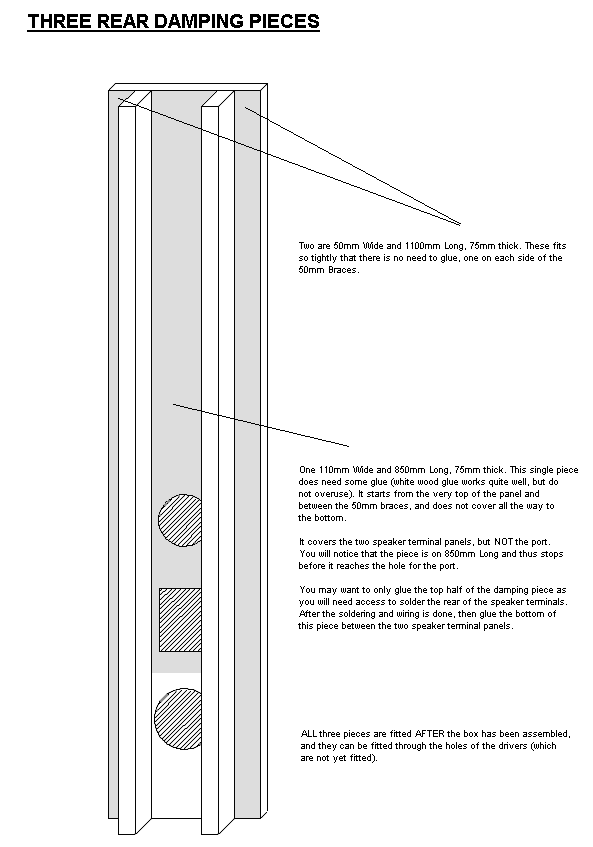
As can be seen, there are five pieces of
damping material. These were Wool 60% and Dacron (polyester fibre) 40%.
This has a low density. If you can source this
material, used as insulation bats, but if other types of insulations bats
are used, you may still use above as guide, but some experimentation may be
required. Do not use excessive amount nor material that is too dense.
Also use some suitable glue to hold into place.
The Wool/Dacron bats were cut into the following
shapes/sizes:
2 x 1200mm High, 160mm Wide and 25mm Thick.
Used as Front Damping
1 x 850mm High, 110mm Wide and 75mm Thick. Used
as centre Rear Damping
2 x 1100mm High, 50mm Wide and 75mm Thick. Used
as corner Rear Damping
The above pieces can be fitted after the box assembly
is finished, through the 6.5 inch driver holes.
If denser material is used, then
reduce thickness to less than 75mm in the rear of the box.
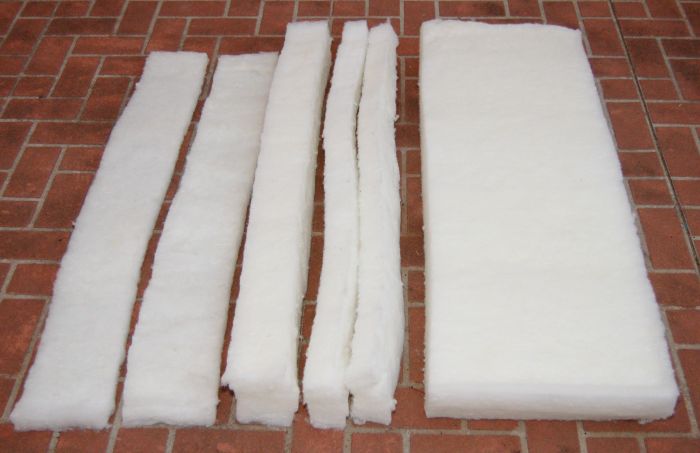
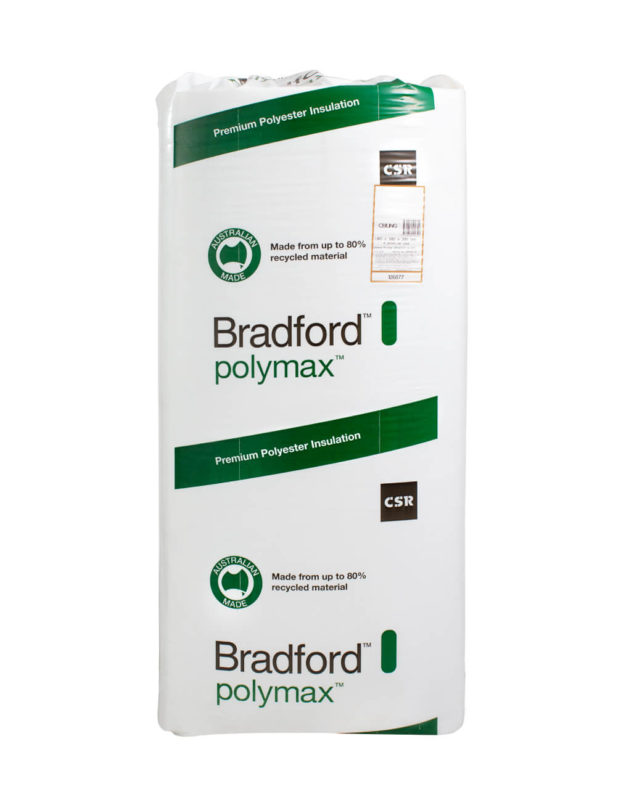
More
recently been using this, but similar should be available in your area:
CSR PolyMax
(Polyester) Batts R3.5
Available from Swadlings Timber, Unwin's Bridge Rd,
Sydenham, Sydney
Blacktown Building Supplies, Sydney, Blue Mountans
and Central Coast 1300 554 775 --------------------------------------
Next: Construction Photos
|